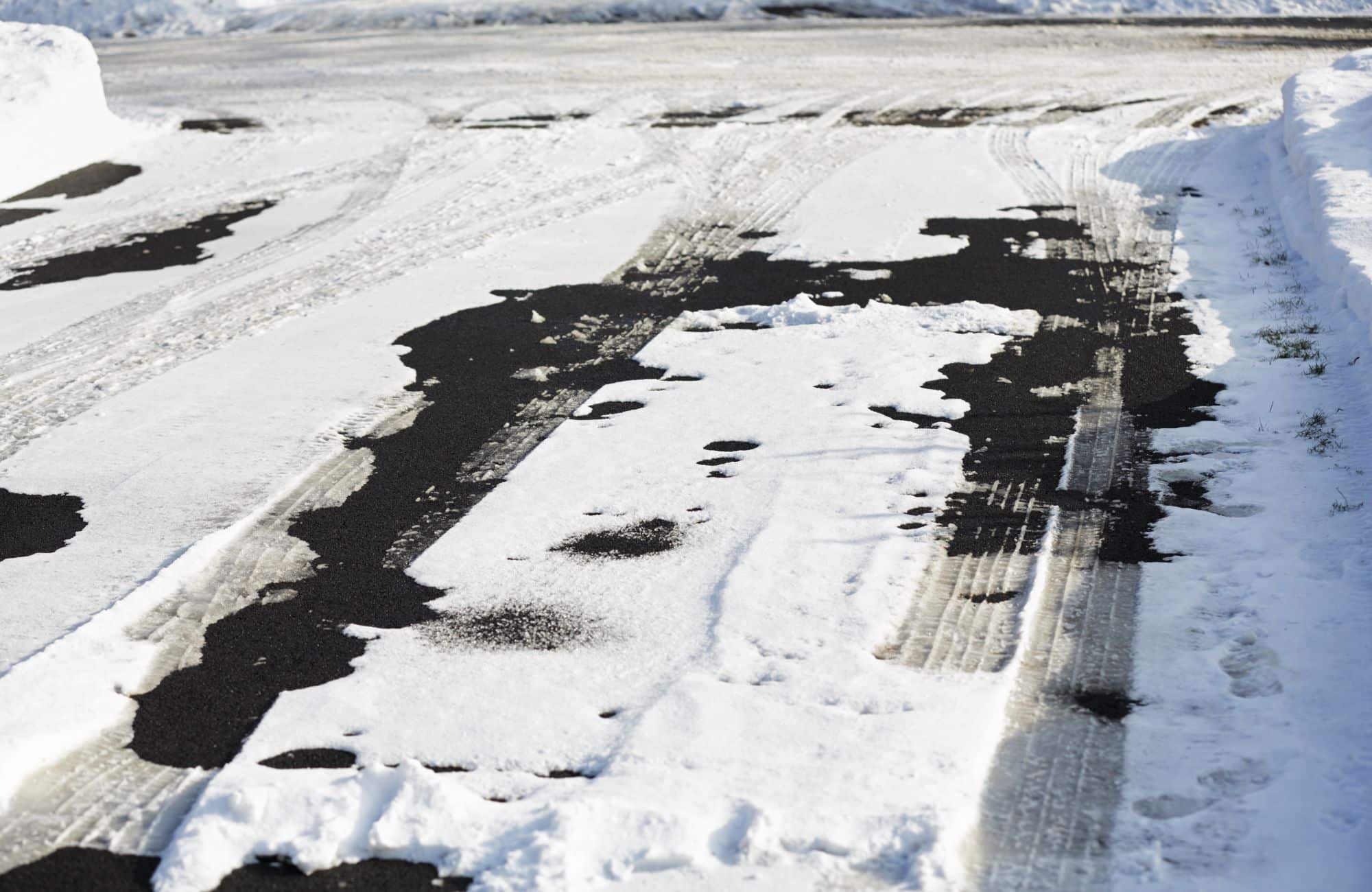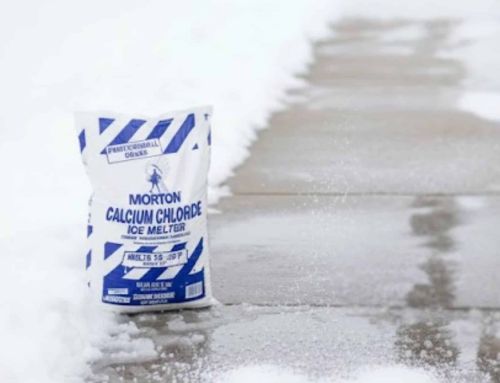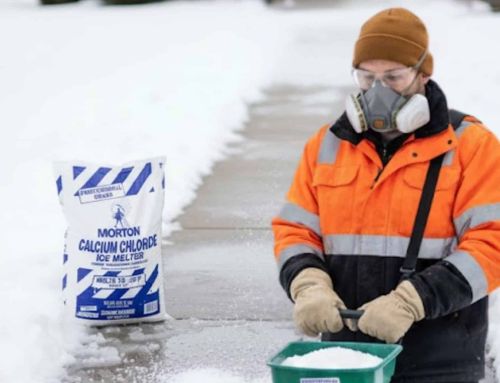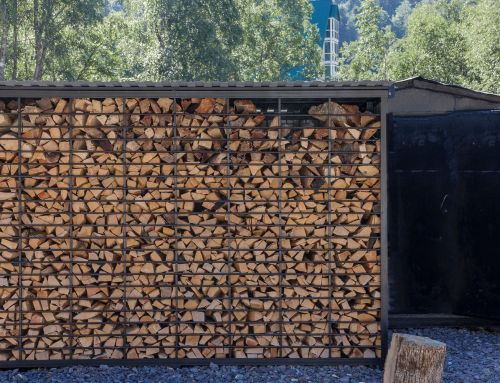Winter weather brings its fair share of challenges, particularly when it comes to managing ice on walkways, driveways, sidewalks, and roads. Many people turn to sand as a solution for icy surfaces, hoping to prevent slips and falls. But does sand melt ice? While sand is often used to improve traction, it doesn’t actually melt the ice. Instead, it helps by providing friction on slippery surfaces, which can prevent accidents. However, sand has its limitations in ice management, especially when temperatures drop below freezing.
In this article, we will explore how sand works on ice and its effectiveness in various weather conditions. We’ll also discuss the environmental impact of using sand for ice management. Additionally, we’ll cover the best alternatives for melting ice effectively. By the end, you’ll understand when sand is useful and when other options, like Old Station Outdoor & Landscape Supply’s sand-salt mixture or ice melt, are better.
What Does Sand Do to Ice?
The short answer is that sand does not melt ice, but it is commonly used to improve safety on icy surfaces. Many people turn to sand as a quick solution, hoping it will help manage the ice, and use sand primarily for this purpose. While sand doesn’t melt the ice itself, it plays an important role by improving traction and providing better traction on icy surfaces, preventing slips and falls. In this section, we’ll explore exactly what sand does to ice and why it’s a popular choice during winter months. Sand provides instant traction, making surfaces safer immediately, even though it does not melt the ice.
Sand as a Traction Aid
When winter weather strikes, many people turn to sand to improve traction on icy surfaces. While sand doesn’t melt ice, it helps prevent slips by providing better grip on slippery walkways, driveways, and roads. Sand doesn’t lower the ice’s temperature but creates friction between the icy surface and pedestrians or vehicles. This friction makes walking or driving on icy surfaces safer. Sand also improves grip for shoes, helping people walk safely on ice and reducing the risk of slipping.
Sand grains are rough and jagged, which allows them to “grip” the ice and improve traction. The primary function of sand is not to melt ice but to offer immediate traction in snowy or icy conditions. This makes sand particularly useful for reducing slippery roads and preventing slips when walking outside.
How It Helps with Traction
When the ice on the ground is too thick for simple snow removal or when other de-icing agents fail to work due to extreme cold, sand comes into play. The grains of dry sand absorb moisture and improve traction. However, it’s important to note that sand does not break down the ice. If you’re looking to melt ice, sand is not the solution. Its purpose is entirely focused on increasing friction.
While sand doesn’t melt the ice itself, it plays an important role by improving traction and providing better traction on icy surfaces, preventing slips and falls. For further guidance on snow and ice removal best practices, refer to this detailed guide
How Effective Is Sand in Different Temperatures?
The effectiveness of sand in managing ice can vary depending on the temperature. While it works well around the freezing point, its performance diminishes in extremely cold conditions.
Performance in Freezing Conditions
One of the most significant limitations of sand is its effectiveness in extreme cold. While sand works effectively when temperatures hover around the freezing point (32°F or 0°C), its performance starts to decrease when the temperature drops much lower. Sand can’t lower the freezing point of water like salt or magnesium chloride. These agents work by creating a lower freezing temperature, allowing them to melt ice, which sand cannot do.
Why Sand Is Less Effective in Extreme Cold
In temperatures well below freezing, sand may still provide traction, but it won’t have any effect on the ice itself. In extreme cold, sand doesn’t break the bond between the ice and the ground. Without a chemical agent to lower the freezing point, sand merely sits on top of the ice, offering limited assistance. Unlike salt, sand does not alter the chemical composition of the ice or form a brine; it only provides physical benefits such as traction and heat absorption.
For more effective ice management in extreme cold temperatures, de-icing agents such as rock salt, calcium chloride, or even eco-friendly alternatives are better options. At Old Station Landscape Supply, we offer a sand-salt mix that works to provide both traction and melting benefits during these cold conditions.
Sand vs. Other Ice Melting Agents
While sand plays an important role in improving traction, it’s not the best solution when you need to actually melt ice. Different materials, such as salts and sand, interact with ice in different ways, affecting the melting point and the melting process. Here’s a comparison of sand with other popular de-icing agents:
Salt vs. Sand
- Salt (typically sodium chloride), also known as table salt, is one of the most common de-icing materials because it can lower the freezing point of water. Salt works by forming a brine when it dissolves in water, which melts ice and snow effectively at temperatures above 15°F (-9°C). This makes it a better option than sand when you need to actually melt ice. Salt works by forming a brine on the ice surface, which helps to break the bond between the ice and the pavement.
- Sand doesn’t melt ice at all, but helps with traction by preventing slips and falls on icy surfaces.
Calcium Chloride
- Calcium chloride is another highly effective ice melter, especially in extreme cold. It works at temperatures as low as -25°F (-32°C), making it a better option when temperatures plummet. It’s more effective than both sand and salt in extreme conditions.
Eco-Friendly Alternatives
- If you’re looking for more environmentally friendly options, magnesium chloride or potassium acetate are both effective at melting ice without causing the same level of damage to the environment as salt can. While sand offers traction, it doesn’t provide the same chemical benefits in melting ice as these agents.
Old Station Outdoor & Landscape Supply offers a sand-salt ice-melting mixture for a more balanced solution. This product provides both traction and melting properties in one convenient option.
Environmental Impact of Using Sand for Ice
While sand is often considered a safe alternative to chemical de-icers, its environmental impact shouldn’t be overlooked. Overusing sand can have detrimental effects, such as clogging storm drains and harming aquatic habitats. However, when used responsibly, sand can help protect natural environments from the harsher impacts of chemical runoff. Excess sand can end up in storm drains, contributing to water pollution. Additionally, too much sand can cause soil degradation and harm plants when it accumulates in the soil.
Effects on Soil, Grass, and Waterways
Sand may improve traction, but once it’s washed away by rain or snowmelt, it can contribute to sedimentation in nearby waterways. This sedimentation can reduce water quality and affect local wildlife. Moreover, when left on the ground for prolonged periods, sand grains can compact the soil, making it more difficult for plants and grass to grow. If you live in an area with fragile ecosystems or want to be more environmentally conscious, using sand in moderation or opting for eco-friendly alternatives might be a better choice.
Alternative Ice-Melting Solutions
These solutions are especially useful for parking lots, icy roads, and during a snowstorm, helping to maintain safety and accessibility in challenging winter conditions.
- Magnesium Chloride: This is a more eco-friendly alternative to sodium chloride (salt). It’s effective at lower temperatures and poses less risk to plants and animals.
- Calcium Magnesium Acetate (CMA): This de-icer is biodegradable and less harmful to the environment than salt. It works well in both cold and moderate temperatures and is safe for use around vegetation and concrete.
- Eco-Friendly Salt Blends: Some companies offer salt blends that reduce environmental impact while still effectively melting ice and improving traction.
Conclusion
In conclusion, sand is a great tool for improving traction on icy surfaces, but it doesn’t melt the ice. While it’s cost-effective for preventing slips, its effectiveness declines in extreme cold. For better ice management, consider using salt or calcium chloride in freezing temperatures. Eco-friendly de-icers can also provide similar results without harming the environment.
At Old Station Outdoor & Landscape Supply, we offer sand-salt ice-melting mixtures that provide both traction and melting power. This makes them ideal for winter conditions. Ready to tackle winter weather safely? Contact us for expert advice and find the right sand-salt mixture for effective ice removal this winter. Whether you need eco-friendly alternatives or traditional salt options, we’re here to help.
FAQs
Does sand help melt ice?
No, sand does not melt ice. Sand provides traction by increasing friction between the ice and surfaces like roads or walkways. While it helps prevent slips and falls, it does not have any effect on lowering the freezing point of the ice.
How does sand melt ice?
Sand does not melt ice. Instead, it improves traction on slippery surfaces by creating friction between the icy surface and vehicles or pedestrians. The primary function of sand is to prevent slipping, not to change the ice’s temperature or break it down.
How long does it take for sand to melt ice?
Sand does not melt ice, so it doesn’t have a specific time frame for melting it. The effectiveness of sand is focused on traction, not ice melting. It can immediately improve grip on icy surfaces but won’t cause the ice to melt.
What happens if you put sand on ice?
When you put sand on ice, it increases friction, which helps prevent slipping on the icy surface. While sand doesn’t melt the ice, it improves traction for walking, driving, or maneuvering through icy areas. However, it doesn’t address the ice itself, so it won’t break it down or reduce its thickness.










